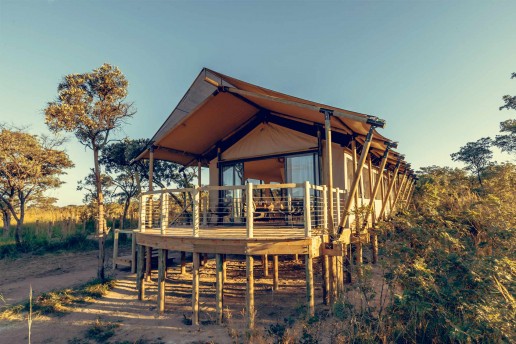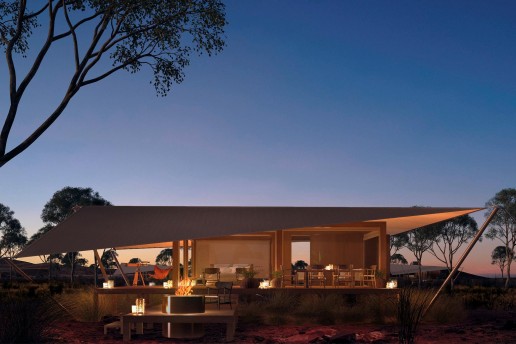Xigera Safari Lodge has unveiled a new treehouse experience, set to launch alongside the resort’s reopening in January 2021.
Rising 10 metres above the floodplain, the three-story Baobab treehouse takes inspiration from the iconic painting of a solitary baobab by Jacobus Hendrik Pierneef, one of South Africa’s master landscape artists.
Eight individually designed steel branches radiate out from the central trunk, as would the branches of a natural baobab tree, and remain untreated. This will allow the branches to rust overtime, gradually becoming fully integrated into the natural environment.
Inside the treehouse’s ‘trunk’, a spiral staircase rises four metres above ground, delivering guests to each of the baobab’s three levels. Both the bedroom and bathroom spaces have canvas walls which can open up completely to the outside environment, or zipped up for privacy.
The third level, featuring an open-air deck, offers a hidden perch from which to witness the magic of the bush or to sleep under the stars. As part of the experience, guests will have a picnic-style supper delivered by a butler at dusk.
Should guests choose to spend the night under a silk-filled duvet with goose down pillows in the open-air king-size bed, the north-facing deck accommodates up to two adults. Following a sleep under the stars, a breakfast basket will be delivered the next morning.
With no electricity, the Baobab treehouse is completely remote and off-grid, offering a unique ‘sleepout’ experience with the same level of comfort as the main lodge.
When water-levels are high, guests can be taken via glass-bottom mokoro, gliding along the Okavango Delta’s waterways to arrive at the baobab for sundown and supper.
Opening on the western side of the Moremi Game Reserve, Xigera Safari Lodge is set to reinvent the African bush experience through inspired hospitality and design. The lodge will feature 12 individually designed suites, including one two bedroom family suite situated on two islands. Architect Anton de Kock conceptualised each suite as a Pel’s Fishing Owl in flight – one of Africa’s most sought-after and elusive birds.
Related Posts
12 October 2020
The Rusty Parrot Lodge & Spa announces details of rebuild
20 April 2020



